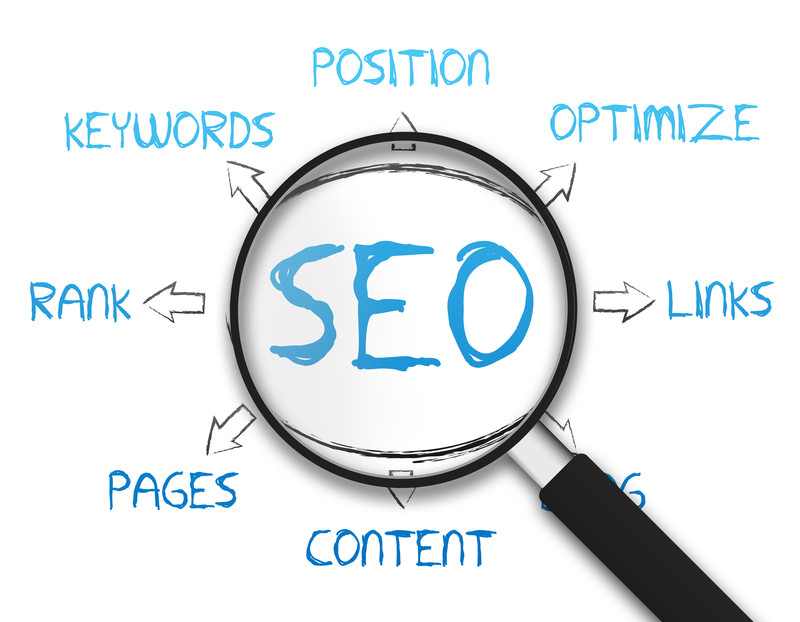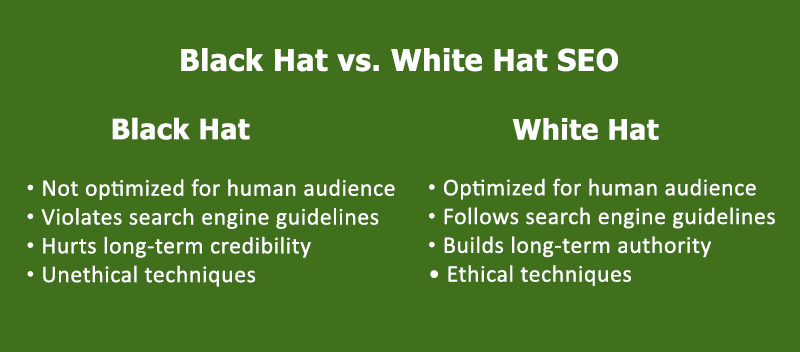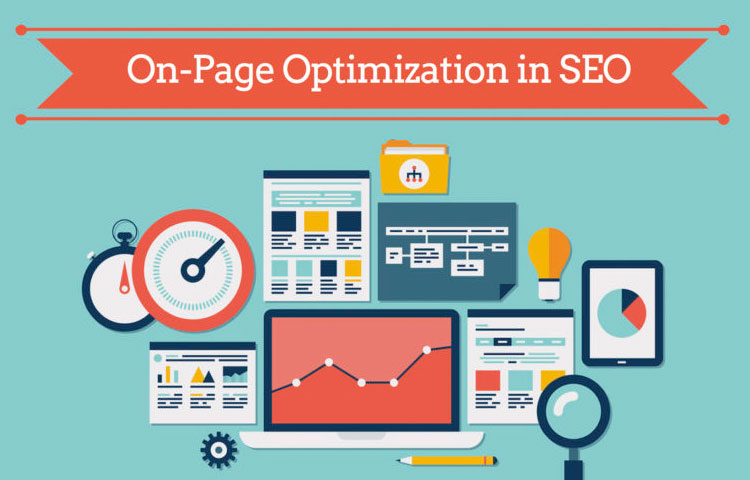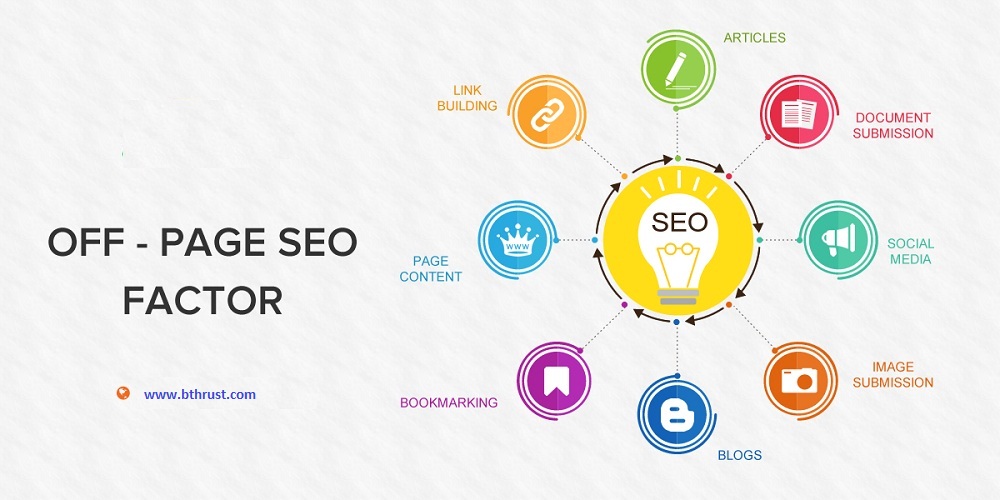
Posted On : 23 July 2020
In this digital era, getting website on the first page and #1 position in search results is not only a business requirement to generate more revenues through target audience but also a platform to create sustainable brand visibility. Search engines tend to pick up websites that are informational, optimised, authentic, and morerelevant to consumers. Effective SEO strategy includes technical skills, understanding of customer behaviour and goals of the service provider. In this comprehensive blog, we will take you through every grit that makes SEO a powerful weapon in the digital world. In this way, you can understand how websites can rank higher, get more traffic, and generate more ROI.
OVERVIEW
What exactly is SEO?
Search Engine Optimisation (SEO) refers to the process of generating free, organic, and authentic traffic on websites by ranking higher on the results that appear on the search engines.
All search engines are a massive collection of web pages and content. They pick up the most relevant websites and rank them according to their performance, so customers can get answers to what they are searching for.
Why is SEO Important?
As the digital world is becoming more complex, it is becoming even harder to get the right attention to the search results. In order to attract customers, businesses require SEO to rank their websites higher on the search by providing useful information to the visitors. In this way, they can drive the right traffic on their platform and convince visitors to buy their products. Accordingly, SEO strategies can also help your business to generate more ROI. Individually, SEO offers more sustainable results and long-lasting visibility as compared to other digital marketing strategies.
Here are some more exciting benefits of SEO:
- The better the rankings, the more your customers will trust your business
- Good SEO also improves the user experience
- The world of SEO has substantial opportunities for growth and improvements
- SEO is actually not that expensive to incorporate in the business
But what is the difference between SEO and PPC?
We already have explained what SEO is. So coming on to PPC, the word stands for Pay Per Click. The significant dissimilarity between SEO and PPC is where SEO generates organic traffic, PPC actually brings paid traffic. Overall, SEO is concerned with improving the visibility of the brand in the online way. It puts the brand's website on the top in search engine result pages (SERPs).
On the other hand, PPC involves placing sponsored advertisements on search results. You can decide to create your own ads, use targeted keywords, and employ creativity in any way you want. However, both SEO and PPC are concerned with generating traffic to your site and ensuring more people can reach out to your business.
And what about Search Engines?
In simple words, a search engine is any web-based tool that allows the users to find information across the World Wide Web. Some famous examples of search engines include Yahoo, Bing, and MSN Search.
What search engines do is to basically find results from myriads of the database, prioritise and list the most relevant details in an organised manner on the search results. The list is usually known as the search engine results page (SERP).
How do search engines work?
Different engines may work in a slightly different way. But the core of the search engines remains the same. Be it Google or Microsoft MSN, each search engine is responsible for looking after crawling, indexing, and generatingresults.
Crawling usually involves the role of small bots that scan uncountable websites available on the world wide web. They go on to scan everything from sections to subpages found on sites to identify whether the keywords are used or not.
Once the data is crawled and found, the process of indexing takes place when the websites are indexed to be displayed on the search results. The search engines categorise the websites according to their content, reliability, and authenticity. Finally, ranking involves the search engines to rank each website based on various factors, such as usage of keywords, speed, and links.
The Link Between SEO & Search Engines
Search Engines use a variety of standards to differentiate between relevant and irrelevant sites. SEO allows the brands to optimise their websites, so they can be recognised by the search engines to be appropriate in accordance with the things being researched by the users.
WHITE HAT SEO VS. BLACK HAT SEO

When we talk about SEO, we also talk about white hat and black hat a lot. Now, these hats can be considered boundaries that divide good SEO practices from bad ones. Here are some significant variations between the two:
Features of White Hat SEO
- Follows all the search engine guidelines and rely on ethical techniques to boost the ranking on search engine results
- Focus on user experience
- Content is generally of great value and interests, which other sites prefer to link as a resource
- Long-lasting technique due to the quality of the content
- Lesser or no risks involved
Features of Black Hat SEO
- Involves the manipulation of rankings and a whole lot of deceiving
- Send substantial amount of traffic using bots to deceive the search engine at the first instant
- Rely on sources like Private Blog Networks (PBNs) by which the link is added in the content after paying a hefty amount
- Content is also copied from other sources and spammed with keywords
- Effective in the short term only as search engines discover them quickly
- More risks involved
Simply put, white hat SEO is what you need to opt for sustained and ethical online presence. It will take time some more efforts to generate results, but the results are all worth in the end.
KEYWORD RESEARCH AND TARGETING
Keyword research refers to the process of searching for crucial words and phrases that the users employ in search engines to search for relevant sites. Keyword research influences every part of the SEO strategy.
Which keywords are relevant to you comes down to your website, services, goals, industry, resources, budgets, and audience. Here are some standard metrics associated with this ever-so-important SEO framework.
Search Volume
Search volume reflects the overall demand for a keyword on the web. Your content should be optimised with the right words and phrases that are more closer to the targeted keyword, so your site can attract relevant visitors. In this way, search volume shows how many times people are using a particular word or phrase.
Relevance
Keyword relevance refers to the measurement of a keyword segmentation. You might have thousands of keywords relevant to your overall operations, but it will not be feasible to use all of them in your content. By weighting the percentage of all the keywords against the percentage of visits drawn from a particular one, SEO tools rank these words and phrases according to their relevance, so you can use only the most prospective keywords only.
Competition
Keyword competition refers to the process of determining the number of web pages your site needs to beat in order to conquer the best spot in the search engine results. Accordingly, you need to consider your competition and the potential of a keyword to overcome all of it before deciding which one to use.
Tools
Fortunately, numerous tools in the online world out there can help you with your keyword research. Small businesses and individual-led initiatives usually rely on these tools to find basic keywords based on search volume and relevance. We have listed down some of them to help you choose the best for yourself.
- Soovle: The tool hunts down thousands of keywords from Google, Bing, Yahoo, Amazon, YouTube, Wikipedia, and other relevant sources on a single platform. Since most businesses rely on keywords from Google only, you can find new phrases and words that others haven't used yet.
- Ahrefs Keywords Explorer: The Afrefs Keywords Explorer is a powerful weapon for businesses that want detailed information on every single keyword. Not only do you get information regarding search volume and all the basics, but the Keywords Explorer also provides detail regarding first-page competition and keyword difficulty.
- Google Search Console: It's not just any traditional tool for keywords research. While it provides the same basic features as other tools, a great aspect of Google Search Console is the Performance Report. This detailed report provides insight into the pages on your website that can get the highest number of clicks.
- Jaaxy: Another great tool in our list is Jaaxy, a very powerful contender indeed. Within seconds, Jaaxy can find thousands of keywords together with their traffic, search volume, competition, and domains. A particular feature that we love about the site is the Quoted Search Result or QSR, which simply tells you the number of websites using the exact term.
- SEMrush: Last but not least, semrush is prominent for helping in digital marketing. Using this tool, you can get a complete technical SEO audit, analyse your traffic, gather SEO ideas, and keep track of your competitor's strategies.
ON-PAGE SEO

On-page SEO refers to the process of optimising separate web pages to give them higher rankings and generate more traffic on the site. Overall, on-page SEO involves the optimisation of the content together with the HTML source code of the page. Below we cover some basic elements associated with it:
Site Structure
Site structure usually dictates the layout of the web pages on a site. For example, a flat site structure has few pages that can be clicked from the home page. In site structures, URLs play a key role.
URL Optimisation
Referred to as Uniform Resource Locator, URLs are the web pages that help the users to locate a particular resource on the internet. Consisting of protocol, domain name, and specific information like folder names, URLs improve user experience and rankings.
Content Optimisation
Quality content is also a key driver of effective SEO, which is not only informative and engaging but also contains an adequate number of keywords smartly placed all across it. In doing so, it is vital to carefully plan out a content strategy, focus on UX, and make it relevant. There are several content optimisation strategies that you should be aware of to get the best out of your content.
Title Tag
Basically, the HTML element that shows a webpage's title, a title tag tells visitors what they can receive from a particular page. Title tags also need tostrategise to be formulated in the right manner. This can be done by targeting a primary keyword, searching its long-tail variation, creating a basic title tag, and showing visitors what's unique about the site.
Meta Description
Simply put, meta descriptions refer to the meta tag describing the purpose of a page. These descriptions are taken into account by Google, affecting the site's ranking, traffic, clicks, and revenue. It is preferable to find a primary keyword, analyse competitor's operations, research the SERP, and make it useful for the clients.
Keywords Density, Proximity, and Prominence
The keyword proximity describes the closeness of several keywords to each other, which can be either close or far. On the other hand, keyword prominence shows how eye-catching a keyword can be on the website, such as by highlighting it. Keyword density deals with the ratio between the content and keywords on a page.
Duplicate Content
When similar content appears on various pages, Google immediately recognises duplicate content that ruins a site's ranking. Duplication can easily occur because of inadequate use of URL, its parameters, or similarity in the content. To prevent this issue, it is always feasible to create unique content, insert a canonical link element in the duplicate page, and add an HTML link to the canonical page.
Interlinking
Internal links connect several pages on a single domain, allowing Google to know that a page exists. This is because if a page does not exist on the sitemap or it is not linked elsewhere, it will be considered an orphan page.
XML Sitemap
As a list of all the URLs available on a website, the XML sitemap shows the search engines the content that is available on the site and how it can be accessed. While an XML sitemap does not ensure that the pages will be ranked appropriately, it sure increases the chances of such happening.
HTTP vs HTTPS
Understanding HTTP and HTTPS is vital to know what the address bar does in a browser. HTTP is known as the hypertext transfer protocol that transfers information to the user. On the other hand, HTTPS actually does the same, but the information is kept secured using encryption methods and protocols, so it could be transferred in a safe way.
Page Speed
Issues in imaging, hosting, redirects, themes, and plugins usually slow down a site, which can affect the overall rankings. Therefore, it is vital for the sites to use various metrics and tools, providing page speed insights to improve it.
Mobile Friendly
Since almost everyone uses a mobile now, a website needs to be mobile friendly as well, ensuring a hassle-free UX. This depends upon the layout of the website from the developers' end.
URL Structure
The structure of the URLs can dictate whether a customer understands what the site is providing or note. URL structures can be optimised by using keywords, using relevant structure, avoiding long words, reducing URL strings, using canonical tags, and employing topical authority.
Image Optimisation
Search engines also consider images on a site to consider its ranking. Images can be optimised by using those that are relevant to the content or page. In addition, it is preferable to use high-quality image format, reduce the file size, organise them appropriately, use Alt text, and incorporate a caption.
Schema Markup
It is a kind of microdata that can be included in a webpage for the purpose of improving the description richness. In this way, schema can provide context when a webpage is particularly confusing.
Robots txt
A file with robots.txt makes it evident to the search engine where they can visit and where they cannot. Most search engines follow the robots.txt file. In this way, you can keep some sections of your site secure and prevent duplicate content from being content, overloading of the server, and particular resource files appearing in the search results.
Meta Robot Tags
Mostly prominent as the meta directives, the meta tags are simply codes that tell crawlers how they can crawl or index the content available on the website. Two types of robot meta tags include the meta robots tag for HTMP pages and the x-robots-tag for the HTTP content.
Track & Fix Issues
It is also essential for the websites to continuously analyse their SEO strategies, find the issues, and improve them. It may be easy to ignore SEO-related issues, but they surely reduce the site's ranking. Some common issues include spam traffic, duplicate content, inadequate schema, wrong UTM parameters, and slow page speed. These issues can be resolved with various contingency solutions.
Online Tools
There are various tools that you can employ to foster your On-page SEO. Each one of them comes with special features to support the growth of your online presence. You can definitely find more but to give a headstart, we list down a few of them here:
- Rank Math to add titles, structured data, find dead links, and redirect URLs
- Ahref's SEO Toolbar for tracing redirect chains and finding key metrics
- Merkle's Schema Markup Generator for creating structured data
- SERPSim to provide a preview of your webpage on search results
- Google Rich Results Testing for checking structured markup
- Hunter.io for link building
More On Page SEO: On-Page SEO: What Should You Know About It
OFF-PAGE SEO

Overview
Another vital aspect of SEO is off-page optimisation. Opposite to On-page SEO, off-page SEO refers to all the strategies that are employed outside a site to improve its rankings on SERPs. In this way, off-page SEO focuses on improving the working of search engines and increasing the user's trust on a particular site.
Importance of Off-Page SEO
Just like on-page SEO, off-page strategies are also very essential for creating a positive online presence. Search engines consider various off-page factors when ranking websites. Basically, off-page SEO tells the search engines that your website is important. Such strategies serve to be an endorsement of the quality of your content and overall site.
Let's discuss some important elements associated with Off-page SEO.
Backlinks
Backlinks are simply incoming links on a webpage linking to other pages. Any site that has quality backlinks tend to be placed higher on SERPs.
Natural Backlinks
Just like the name suggests, some backlinks are created naturally when other websites, blogs, owners or pages tend to link to the site.
Backlinks by Outreach to Authority Sites
Outreach allows the website owner to get backlinks by communicating with other site owners and attaining a deal with them. Mostly bloggers and social media influencers can prove to be helpful in outreach strategies.
Local Citations (Business Listings)
Local citations simply tell the basic information about a business across various places on the internet. Such citations can help the search engine to know about your existence and drive traffic.
Google Listing
The tool Google My Business (GMB) allows business owners to list their company's information on the site and show up at local search results, allowing potential customers to reach out to the website.
Content Posting Sites
To promote your content, you can harness the opportunities by sharing it on relevant websites. In this way, the traffic that these websites generate can be redirected to your site. Some of the most prominent content posting sites include:
- Medium
- Dzone
- DesignFloat
Social Media Sharing
You can also share everything on social media platforms such as Facebook and Twitter to reach out to more audience.
Link-related Off-page factors
Backlinks are very important for Off-page SEO, impacting the overall strategy by factors like the number of referring domains and link authority.
Non-link related off-page factors
Some other factors that support off-page SEO other than link building include NAP citations, GMB, Brand mentions, social signals, and reviews.
MEASUREMENT AND ANALYSIS OF SEO EFFORTS
The ultimate success of an SEO strategy also comes down to measurement and analysis. You cannot identify what is working and what is not without analysing the performance of the tools and techniques you have employed.
Therefore, you can Key Performance Indicators (KPIs), identify organic search traffic with Google Analytics, understand keyword rankings, and measure social shares to measure your SEO efforts.
You can also measure conversion rate, backlink volume, and organic click-to-rate for the same purpose. Obviously, there are more strategies you can employ to do so. There are various tools and resources available on the internet that can help you to measure and analyse your performance.
CONCLUSION
The landscape of SEO changes very quickly. It also takes substantial knowledge and skills to champion SEO. However, patience is a crucial virtue when it comes to building, maintaining, and fostering an online presence. With this guide, you can keep track of the various elements and factors you need to consider when building and executing your very own SEO strategy. You can also leave it on professionals to do it for you instead. Tell us what you think about the guide in the comments what you think about the guide and share some strategies of your own.
